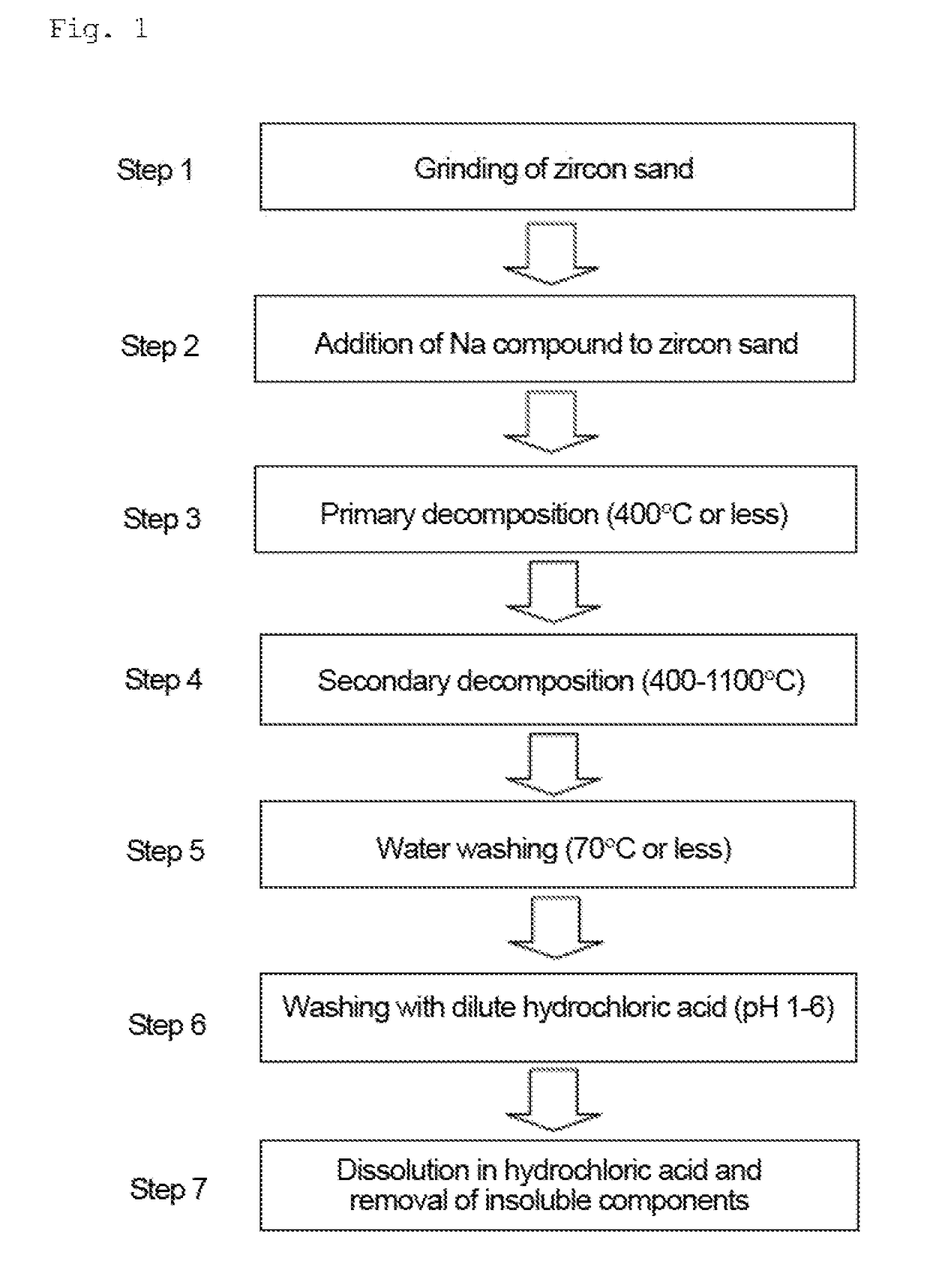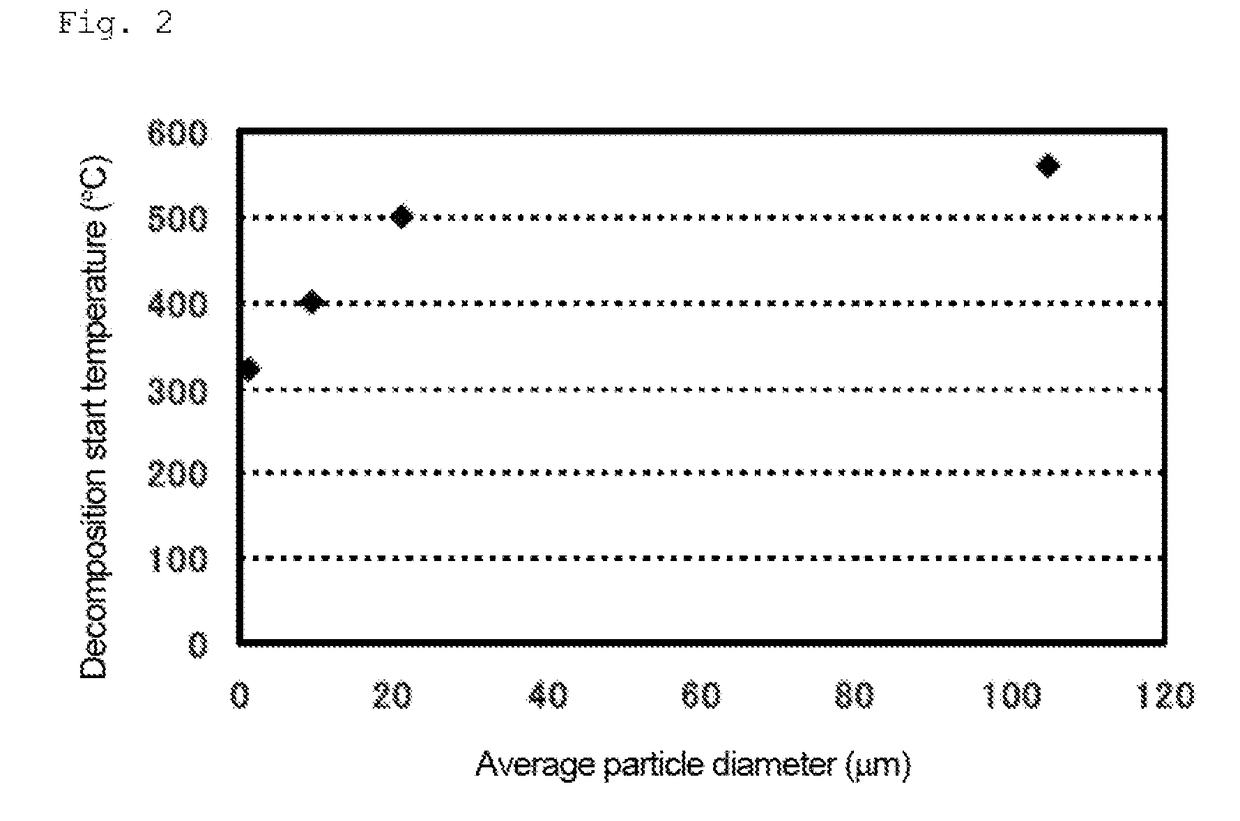Method for producing aqueous zirconium chloride solution
a zirconium chloride and aqueous technology, applied in the direction of zirconium halides, zirconium oxides, etc., can solve the problems of increasing the sodium the hydration of silica (e.g., gelled silica or insoluble silica) has poor filterability, and the iron content of the aqueous zirconium chloride solution increases, so as a technology of a technology of aqueous zirconium chloride solution zirconium chloride solution and zirconium chloride solution and a technology of aqueous zirconium chloride solution and a technology of aqueous zirconium chloride solution and a technology, applied in the field of zirconium chloride and zirconium chloride and aqueous zirconium ziide solution solution
- Summary
- Abstract
- Description
- Claims
- Application Information
AI Technical Summary
Benefits of technology
Problems solved by technology
Method used
Image
Examples
example 1
[0108]Zircon sand produced by ILUKA was used as the starting-material zircon sand, and an aqueous zirconium chloride solution was produced by the following steps 1 to 7.
Step 1: Grinding of Zircon Sand
[0109]The aforementioned zircon sand (1 kg) was placed in a 4-L resin pod containing 10 kg of stabilized zirconium oxide balls (φ10 mm). Further, 1 kg of water was added, and the zircon sand was ground. The grinding treatment was continued for 20 hours, thereby obtaining a zircon sand slurry. The slurry was dried to a constant weight at 110° C. The average particle diameter (D50) was about 1.2 μm. The average particle diameter was measured using a laser diffraction particle size analyzer SALD-2200 (produced by Shimadzu Corporation).
Step 2: Addition of Sodium Compound to Ground Zircon Sand
[0110]The zircon sand (100 g) ground in step 1 was placed in a 1-L iron container, and 271 g of 48 wt. % aqueous sodium hydroxide solution was then added. The NaOH / ZrSiO4 weight ratio was 1.3. The sodiu...
PUM
| Property | Measurement | Unit |
|---|---|---|
| average particle diameter | aaaaa | aaaaa |
| temperature | aaaaa | aaaaa |
| pH | aaaaa | aaaaa |
Abstract
Description
Claims
Application Information
 Login to View More
Login to View More - R&D
- Intellectual Property
- Life Sciences
- Materials
- Tech Scout
- Unparalleled Data Quality
- Higher Quality Content
- 60% Fewer Hallucinations
Browse by: Latest US Patents, China's latest patents, Technical Efficacy Thesaurus, Application Domain, Technology Topic, Popular Technical Reports.
© 2025 PatSnap. All rights reserved.Legal|Privacy policy|Modern Slavery Act Transparency Statement|Sitemap|About US| Contact US: help@patsnap.com



